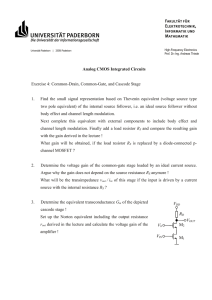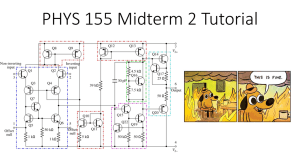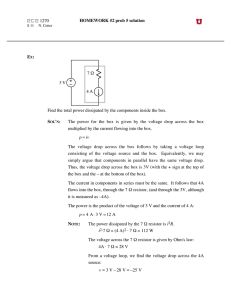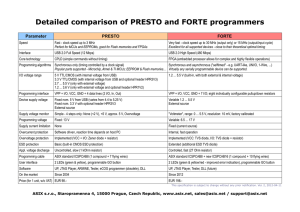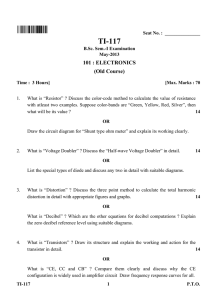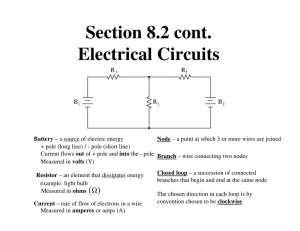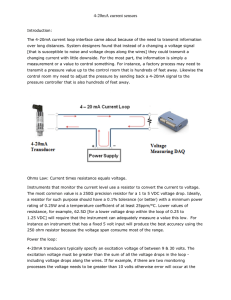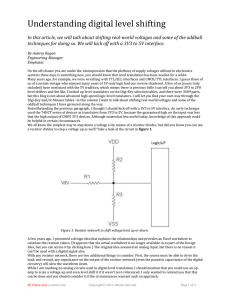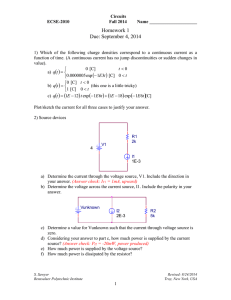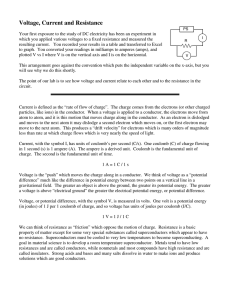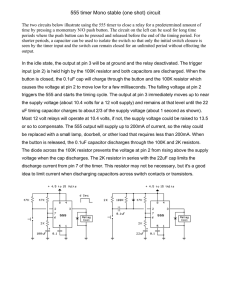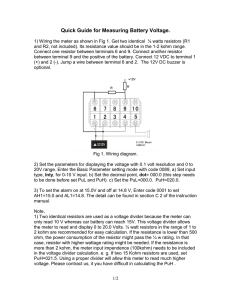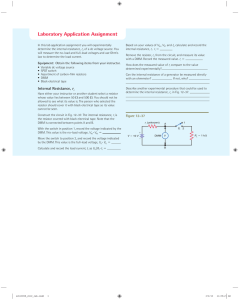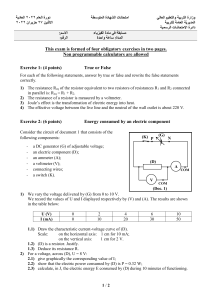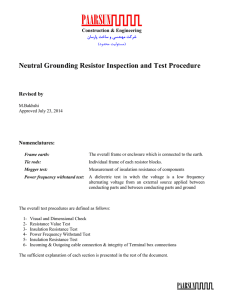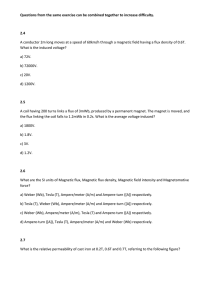Use Voltage Divider Rule to find 1.
advertisement
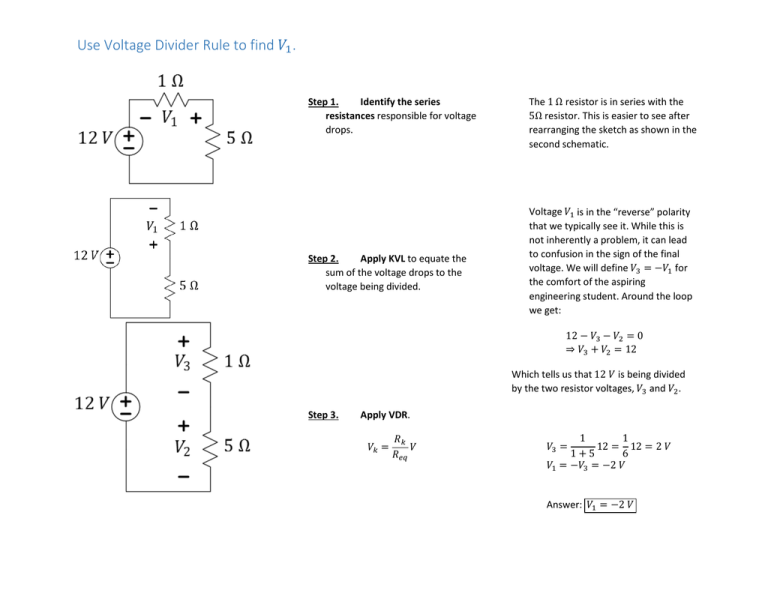
Use Voltage Divider Rule to find 𝑉1 . Step 1. Identify the series resistances responsible for voltage drops. Step 2. Apply KVL to equate the sum of the voltage drops to the voltage being divided. The 1 Ω resistor is in series with the 5Ω resistor. This is easier to see after rearranging the sketch as shown in the second schematic. Voltage 𝑉1 is in the “reverse” polarity that we typically see it. While this is not inherently a problem, it can lead to confusion in the sign of the final voltage. We will define 𝑉3 = −𝑉1 for the comfort of the aspiring engineering student. Around the loop we get: 12 − 𝑉3 − 𝑉2 = 0 ⇒ 𝑉3 + 𝑉2 = 12 Step 3. Apply VDR. 𝑉𝑘 = 𝑅𝑘 𝑉 𝑅𝑒𝑒 Which tells us that 12 𝑉 is being divided by the two resistor voltages, 𝑉3 and 𝑉2 . 1 1 12 = 12 = 2 𝑉 1+5 6 𝑉1 = −𝑉3 = −2 𝑉 𝑉3 = Answer: 𝑉1 = −2 𝑉




